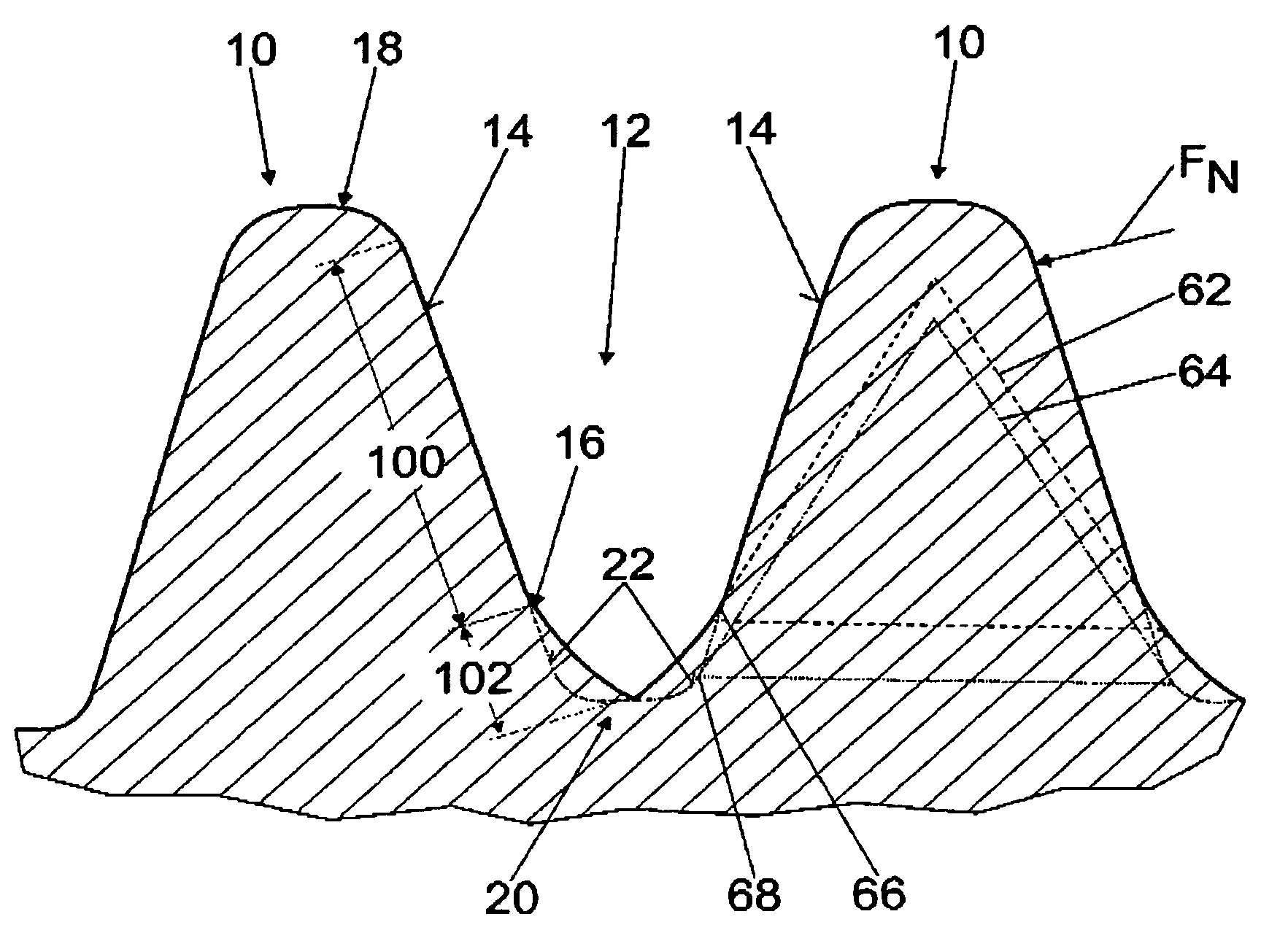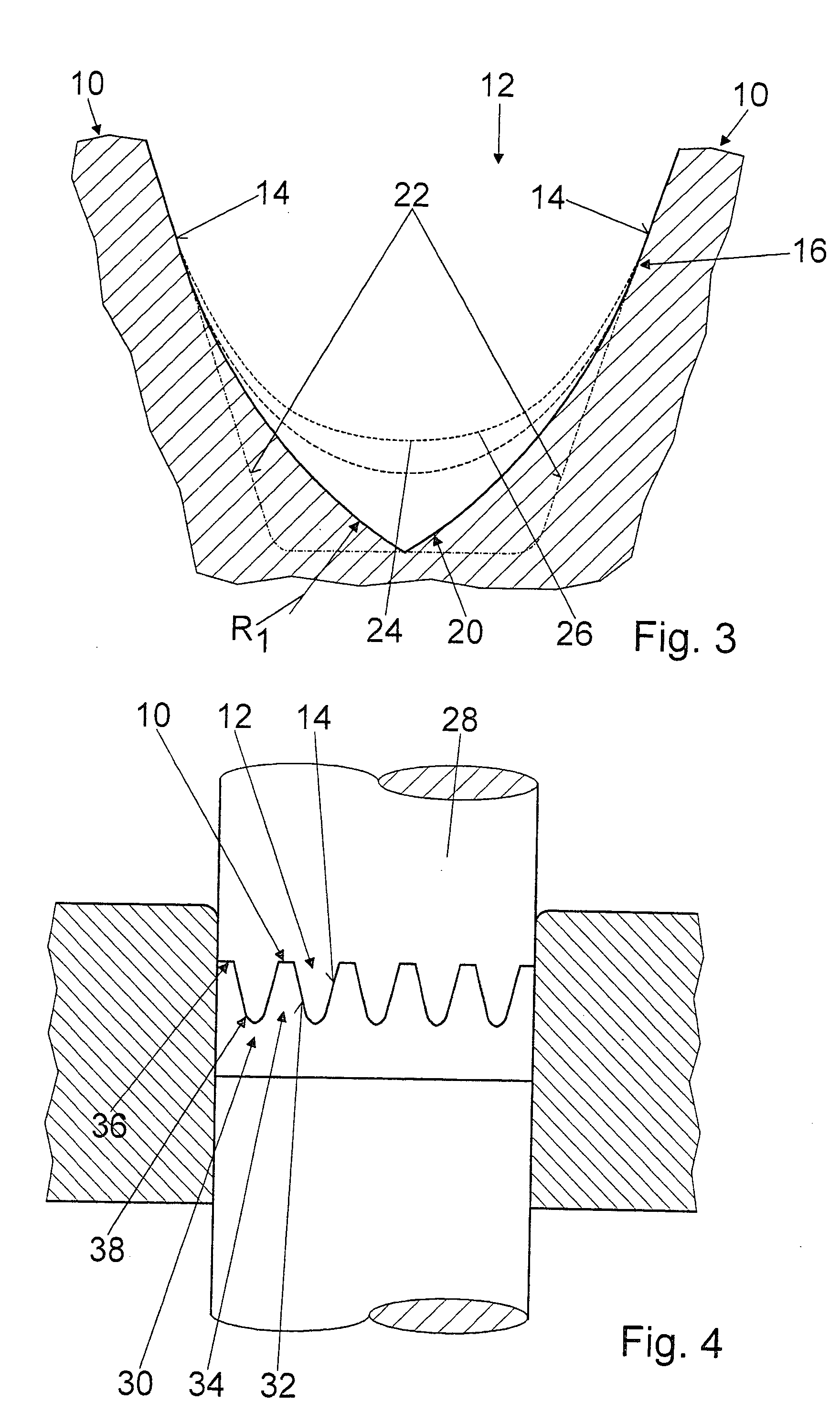Ring gear
a ring and gear technology, applied in the field of ring gear, can solve the problems of inability to create longitudinally cambered tooth flanks, limit the design of the rounding of the tooth base, etc., and achieve the effects of simple and fast adjustment, high precision and replicability, and economics
- Summary
- Abstract
- Description
- Claims
- Application Information
AI Technical Summary
Benefits of technology
Problems solved by technology
Method used
Image
Examples
Embodiment Construction
[0027]FIG. 1 shows a detail of a schematic plan view of a ring gear of the invention, with teeth 10 and tooth gaps 12; the teeth 10 can be brought into engagement with a corresponding pinion, not shown in detail here, by way of tooth flanks 14.
[0028]The tooth flanks 14, after a final engagement point 16 of the pinion, from the tooth head 18 toward the tooth base 20, compared to standard tooth flanks 22, are made to approximate a trochoid 24, 26, described by the pinion and projected into a normal section; specifically, the tooth gap 12 is embodied in the form of a pointed arch in cross section in the region of the tooth base 20 (FIGS. 2 and 3).
[0029]The trochoid 24 is described by a pinion with a rated tooth height, and the trochoid 26 is described by a pinion with a rated tooth height plus 0.1 mm. The tooth flanks 14, after the last engagement point 16 in the direction of the tooth base 20, have a radius R1 of approximately 1.6 mm and before the engagement point 16 from the tooth h...
PUM
| Property | Measurement | Unit |
|---|---|---|
| height | aaaaa | aaaaa |
| radius R1 | aaaaa | aaaaa |
| radius R2 | aaaaa | aaaaa |
Abstract
Description
Claims
Application Information
 Login to View More
Login to View More - R&D
- Intellectual Property
- Life Sciences
- Materials
- Tech Scout
- Unparalleled Data Quality
- Higher Quality Content
- 60% Fewer Hallucinations
Browse by: Latest US Patents, China's latest patents, Technical Efficacy Thesaurus, Application Domain, Technology Topic, Popular Technical Reports.
© 2025 PatSnap. All rights reserved.Legal|Privacy policy|Modern Slavery Act Transparency Statement|Sitemap|About US| Contact US: help@patsnap.com



